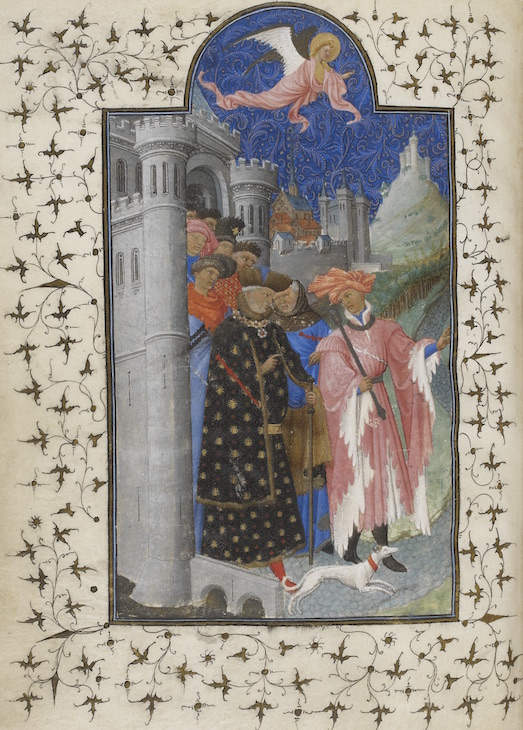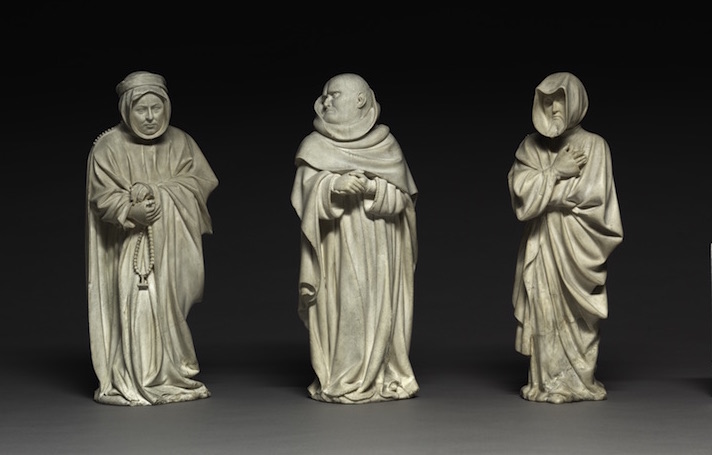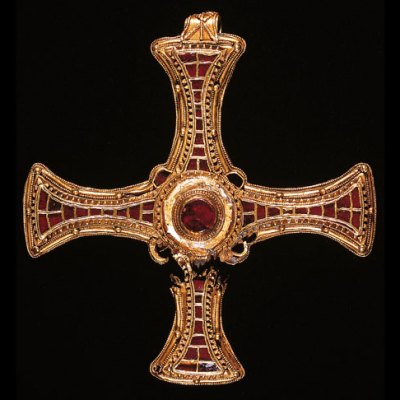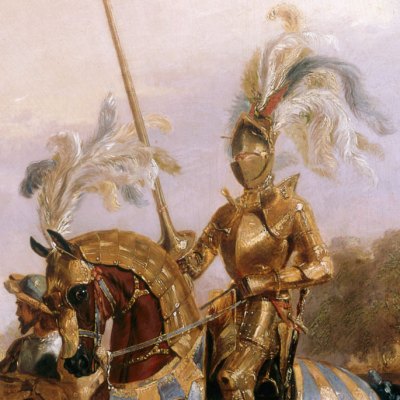Though Johan Maelwael (c. 1370–1415) is hardly a well-known figure now, it is easy enough to prove his significance by pointing to the abundant records of his career. They show in no uncertain terms that he was one of the most successful international artists in late medieval Europe: a central force in the vast artistic output of the Burgundian court at Dijon; and, as uncle to the famous miniaturists the Limbourg brothers, he was both literally and figuratively one of the key links in the genealogy of International Gothic. He is also a significant figure for the Rijksmuseum in being the first known painter to have come out of the Netherlands – ‘Chapter one of Dutch art history,’ as curator Pieter Roelofs puts it to me.
On that basis alone, he could be credited with an astonishing legacy. But, for all this, exhibiting Maelwael presents an unenviable challenge: almost nothing remains of his work. There is the sadly faded polychromy on the limestone figures of Claus Sluter’s Well of Moses (1395–1404) in Dijon, documented as Maelwael’s work in the detailed records of the commission; and, strictly, that is it. Unless we count a tiny smiling face nestled within the flourish of his signature on a document, only the Louvre’s Large Round Pietà (c. 1400) is widely accepted as being Maelwael’s work. In the dispiriting list given by Roelofs in his catalogue essay, ‘war and Iconoclasm, wear and tear, insect damage, and neglect’ have done away with the rest. Which leaves the vexing question of how to display the legacy of an artist of whom so little remains.
Large Round Pietà (c. 1400), Johan Maelwael. Musée du Louvre

The answer that Roelofs and the Rijksmuseum have given is likely to go down as one of the most superbly curated medieval shows in recent years. ‘Johan Maelwael’ seeks, and manages, both to illustrate its subject’s place in art history and also to change the way we look at medieval art. Unable to directly reconstruct Maelwael’s own oeuvre, Roelofs and his colleagues have situated what remains of it within a wider world of late medieval art vastly more developed, international, interdisciplinary, and intermixed than modern viewers tend to assume. Placing its 42 pieces – ranging from devotional paintings and manuscript miniatures, to reliquaries, jewellery, limestone sculpture, and even a copper weathervane – in dialogue with each other, ‘Johan Maelwael’ is little short of revelatory.
The interdisciplinary aspect comes across forcefully in Maelwael’s own family story. Born in Nijmegen in around 1370, he grew up in a clan of artists closely tied to the court of the Duchy of Guelders. As the literal meaning of the family name suggests, they were known for ‘painting well’; but it is clear that they had a foot in every major medium of the age. Johan’s father and uncle were painters and heraldic artists; his sister Metta married a woodcarver, Arnold de Lymbourch (or Limbourg), whose eldest sons, Herman, Paul, and Johan, would train as goldsmiths before becoming manuscript illuminators and miniaturists. All of these skills, it is clear, were mutually reinforcing and cross-fertilising.
Petites Heures (c. 1408), Limbourg brothers. Bibliotheque nationale de France, Paris

Maelwael in his turn was polyvalent too: he was appointed as the court painter of Philip the Bold in Dijon in 1397, and his artistic duties were far wider than the modern designation ‘painter’ would imply. In addition to painting and polychroming statues, the documents of his commissions also record fabric designs, interior decorations and heraldic devices for banners, pennants and tournament armour. His epitaph in the Burgundian ducal accounts for gives the catch-all list of ‘images, tableaux, paintings, and other excellent things’.
Though the exhibition focuses on Maelwael in particular, one of its central points is that working across the so-called decorative and fine arts should not be regarded as unique to him and his relations. As the informative essays by Roelofs and his colleagues in the catalogue make clear, courtly artists were expected to be this adaptable as a general rule. Their role was in certain ways less about creating individual artworks, than contributing to the single, constantly evolving artwork that was the court itself. Heading up the ducal workshop, Maelwael oversaw every element in the production of the court’s splendour – from sourcing of pigments, gold, and gems onward. This position, as something akin to ‘creative director’ of the court, is doubly emphasised by Maelwael’s appointment as valet de chambre to Philip – a role that both recognised his artistic worth and gave him increased power to pursue it within the court.
Virgin and Child with Butterflies (c. 1415), Johan Maelwael. Gemaldegalerie, Berlin

One of the consequences of this is the striking graphic coherence of the Burgundian pieces on display here. Much of the curation’s brilliance lies in tracing motifs and mannerisms from one piece to the next to show both Maelwael’s personal influence on those around him and the general unity of style and subject demanded by catering to a particular patron’s tastes. Among other objects, the Rijksmuseum have managed to gather seven of the surviving paintings related to the Burgundian workshops under Maelwael, his predecessor Jean de Beaumetz, and his successor Henri Bellechose, allowing them to be viewed together for the first time in years. It is a tour de force: placing the Louvre’s Pietà and the Gemaldegalerie’s Virgin and Child with Butterflies (c. 1415) alongside Claes Sluter and Claes de Werve’s pleurants from Philip the Bold’s tomb (1404–10), and beside miniatures by the Limbourg brothers, offers the chance to see them both as individual masterpieces and, in some sense, as contributions to a single overall design.
It is a point well known to historians of medieval art, but I have not seen it so forcefully demonstrated as it is here. This is a compact exhibition, but there is enough to dwell on for hours, and of such a quality that picking out individual highlights seems invidious. They are there, of course – among others, the Pietà itself, the incredibly naturalistic pleurants, and the dazzling Bible moralisée commissioned when the Limbourg brothers were just entering their mid-teens. But it is the overall effect that matters. Like the museum’s ‘Small Wonders’ exhibition earlier this year, ‘Johan Maelwael’ offers immediate aesthetic pleasures underwritten by deep but unobtrusive scholarship, questioning our oldest and easiest assumptions around medieval art. It serves Maelwael’s individual legacy very well, but more than that, it is an exhibition that shifts the paradigms of medieval art history.
‘Johan Maelwael’ is at the Rijksmuseum, Amsterdam until 7 January.
From the January 2018 issue of Apollo: preview and subscribe here.



